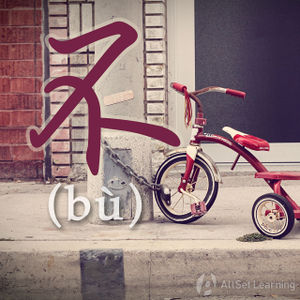Difference between revisions of "Standard negation with "bu""
| Line 58: | Line 58: | ||
* [[Integrated Chinese: Level 1, Part 1 (3rd ed)]] (pp. 31) [http://www.amazon.com/gp/product/0887276385/ref=as_li_ss_tl?ie=UTF8&tag=allset-20&linkCode=as2&camp=217145&creative=399369&creativeASIN=0887276385 →buy] | * [[Integrated Chinese: Level 1, Part 1 (3rd ed)]] (pp. 31) [http://www.amazon.com/gp/product/0887276385/ref=as_li_ss_tl?ie=UTF8&tag=allset-20&linkCode=as2&camp=217145&creative=399369&creativeASIN=0887276385 →buy] | ||
| + | |||
| + | ===Videos=== | ||
| + | |||
| + | * Yoyo Chinese: [https://www.youtube.com/watch?v=340G2Sw4Z50&list=PL94A5E422FB99CDDD Negation word 不] | ||
[[Category:A1 grammar points]] | [[Category:A1 grammar points]] | ||
Revision as of 03:12, 18 June 2013
-
Level
-
Similar to
-
Used for
-
Keywords
Use 不 (bù) to negate verbs in the present or future.
Contents
Negating Verbs
Structure
The standard way to negate verbs in Chinese is with 不. To negate a verb, simply place 不 before it:
Subject + 不 + Verb + Object
Examples
- 我 不 是 德国人。I am not a German.
- 他 不 喜欢 你。He does not like you.
- 她 不 喝酒。She doesn't drink beer.
Almost all verbs can be negated with 不 (unless you're talking about the past). The only verb that can never be negated with 不 is 有.
Negating Adjectives
Surprise! The structure is basically the same.
Structure
Subject + 不 + Adjective
Examples
- 我 不 饿。I'm not hungry.
- 他 不 热。He is not hot.
- 这 个 不 够。This is not enough.
See also
Sources and Further Reading
Books
Videos
- Yoyo Chinese: Negation word 不



